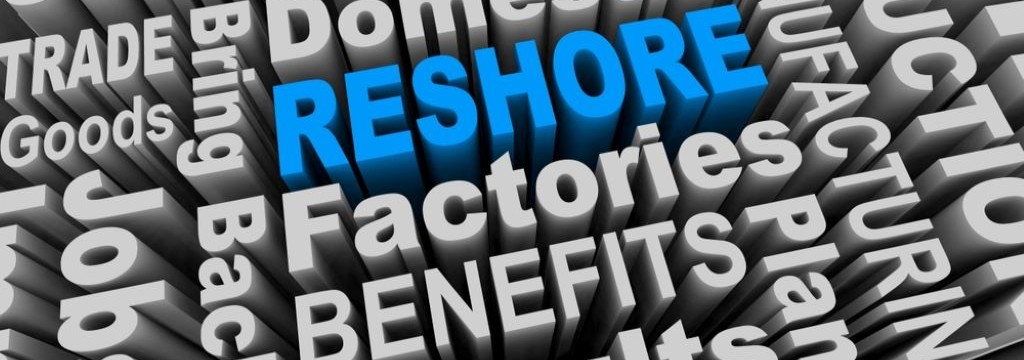Is Industrial CRE Benefiting From Tariffs And Reshoring?
- Home
- Latest News
- Is Industrial CRE Benefiting From Tariffs And Reshoring?

Few themes are shaping 2025 quite like tariffs.
The issue continues to evolve almost daily, with the Trump Administration sending mixed signals on whether new levies are designed to bring manufacturing back to the U.S. or simply boost tax revenues.
For the industrial real estate sector, these developments are more than political theater—they could reshape where and how goods are made, stored, and shipped across the country. As manufacturers weigh whether to “reshore” operations, the key questions remain: Where will they go, and which products are most likely to be made on U.S. soil?
The South Leads the Manufacturing Revival
The American South appears poised to capture much of the reshoring momentum, with states such as Texas, Georgia, and the Carolinas seeing record levels of industrial activity. Investment is especially strong across the battery, EV, pharmaceutical, aerospace, and semiconductor industries.
“I can’t stress enough how much the South is benefitting here,” said Lisa DeNight, managing director of national industrial research at Newmark. “The South has more manufacturing construction underway right now than the rest of the country combined.”
This surge didn’t happen overnight. Over the past five years, domestic manufacturing has been climbing steadily, fueled by federal initiatives like the CHIPS Act and the Inflation Reduction Act of 2022. Those programs laid the groundwork for the current wave of reshoring, even before the latest round of tariffs.
A recent Oxford Economics report found that these laws have spurred major manufacturing investment in markets including Phoenix; Austin and Houston, Texas; Raleigh, N.C.; and Columbus, Ohio—with the South emerging as a clear overall winner.
“The South’s appeal has been amplified by state-led incentive programs and strong marketing campaigns,” said Barbara Denham, lead economist for cities and regions at Oxford Economics.
Many Southern states now brand themselves as part of the “Battery Belt,” highlighting their growing concentration of battery manufacturing facilities.
“Other key advantages include access to labor, energy, and affordable land,” said DeNight. “That is where you are finding the most labor, the most energy, the most business-friendly environment—and, relatively speaking, much more affordable real estate. Pretty much every state has seen at least one major manufacturing announcement over the past two years.”
What’s Driving Reshoring?
“Reshoring tends to happen for two reasons: economic incentives or national security concerns” explained David Greek, managing partner at Greek Real Estate Partners.
Economically driven reshoring often stems from efforts to avoid tariffs or take advantage of federal subsidies. In some cases, the threat of tariffs alone is enough to prompt companies to announce new domestic investments. For instance, U.S. aluminum production surged after a 50% tariff was imposed on imports, and pharmaceutical giant Eli Lilly’s recent U.S. manufacturing expansion has been linked to proposed drug tariffs.
The second category—national defense—focuses less on cost savings and more on supply chain security.
“A lot of what we’re seeing, particularly politically driven from Washington, falls into the category of ‘We need this for national security reasons,’” Greek said.
Sectors such as semiconductors and aerospace fall into this group, as companies aim to diversify supply chains and reduce reliance on China.
East Coast Logistics Gains from Nearshoring
Greek’s firm operates primarily in New Jersey and Pennsylvania, where he sees growing opportunity from another tariff-related trend: nearshoring. As manufacturing capacity expands in Mexico and Latin America, supply chains are being redrawn to favor East Coast and border-area logistics hubs.
“A lot of goods are coming across the border in trucks or trains, but an increasing number are being put onto ships as well,” Greek said. “And those ships, almost universally, will head to the East Coast, not the West.”
Ports such as Newark, Savannah, Norfolk, and Charleston could all benefit, creating new demand for nearby distribution centers. Even Texas, once thought to be facing oversupply concerns, has seen those worries ease thanks to increased nearshoring activity.
Tariff Uncertainty Keeps Tenants Cautious
Despite the activity, unpredictability remains a defining feature of the 2025 trade landscape. Companies are increasingly hesitant to commit to long-term real estate decisions while federal policy remains in flux.
An August report from JLL found that while industrial leasing remains steady, many tenants are opting for shorter lease terms and slower decision timelines. Retailers, for instance, have reduced their space needs by nearly 17% year-over-year, while third-party logistics (3PL) providers have expanded demand by roughly 13%.
“Opening a new distribution center is risk,” Greek explained. “If you can’t do the throughput you want through that facility, it’s a loss generator.”
To minimize exposure, many companies are leaning on 3PL partners and flexible leasing strategies rather than committing to long-term builds.
DeNight summed it up best: “There are about as many responses as there are companies.”
As new tariff announcements continue to reshape the playing field, adaptability—not certainty—remains the industrial sector’s most valuable asset.
Source: Commercial Property Executive
